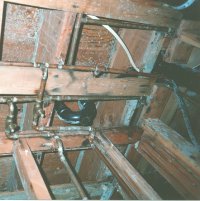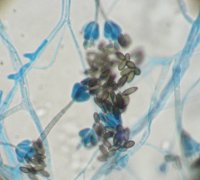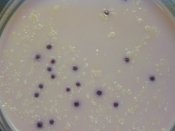The phrase “black mold symptoms” is one of the most searched phrases regarding health effects of mold. The general public believes that black mold is dangerous. However, the term “black mold” does not refer to a specific type of mold. Similarly there are no symptoms specific to “black mold”. A number of molds that grow indoors may appear black. Generally all molds regardless of their color are potentially a health hazard if allowed to grow indoors.
Symptoms of Mold Exposure
The term “black mold symptoms” is rather misleading. People who are sensitive to molds, regardless of the color of the mold, may experience various symptoms such as nasal stuffiness, eye irritation, wheezing, or skin irritation. Those with serious allergies to molds, may have more severe reactions. Severe reactions may occur among workers exposed to large amounts of molds in occupational settings, such as farmers working around moldy hay, demolition workers tearing down a moldy building, and even people working near or in composting facilities. Severe reactions may include fever and shortness of breath. People with chronic lung illnesses, such as obstructive lung disease, may develop mold infections in their lungs.
These symptoms are not restricted to mold exposure. They could also be caused by other airborne polutants. Therefore, the fact that someone is experiencing these symptoms does not necessarily mean they are caused by mold exposure. It’s also important to remember there are no “black mold symptoms” and “black mold” could be any of the several types of molds that appear black.



